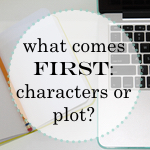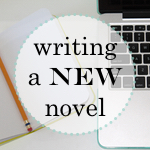
In my last post, I wrote about an excellent resource for writers – Donald Maass’ Writing the Breakout Novel.
In this post, I’ll write about storyboarding and identifying key plot points.
Some writers are tempted to run the opposite direction when they’re told to “outline” or “plot” their novel before they begin writing. We call these writers “pantsers” because they write by the seat of their pants. Writers who prefer planning are called “plotters.”
Honestly, I believe today’s post is for writers of both camps. Creating a storyboard is a fun process which gives structure to one’s novel but isn’t quite as formal as the traditional outline.
Basically, it’s about visualizing the timeline of one’s novel and the placement of all the important events.
A storyboard follows the three-act structure, which you may have seen before. I learned about a similar method called the “plot clock” at a past writer’s conference. And more recently, I’ve become familiar with the “master outline” which is featured on Better Novel Project.
*I’ve come to realize that it isn’t necessarily a strict adherence to any one of these methods, but rather a combination, that does the trick for me. It’s all about finding what works for you.
MATERIALS
tri-fold poster board
Sharpie markers
*LOTS and LOTS of post-it notes
*Okay, so, you don’t need LOTS and LOTS. I just find it’s much more fun to have a variety of colors and sizes to choose from.
LAYOUT
Use your Sharpie to draw a line down the middle panel, splitting this section in half. You should now have four columns. Label these “Act I,” “Act II A,” “Act II B,” and “Act III.”
Label important story elements on post-it notes and place them on your board. The remaining post-it notes are for the scenes which make up your story. This is where my love of color-coding comes into play. On my storyboard, scenes are blue, ideas/thoughts are orange. Some people prefer assigning colors to their characters so it’s easier to keep track of subplots.
PLOT POINTS
Major plot points include the inciting moment, Act 1 climax, Act II-A climax (midpoint!), Act II-B climax, and Act III climax. Each climax should represent an important decision your protagonist makes to move the story forward.
The storyboard is helpful because it allows you to see where pieces of your story fit into the overall plot arc. Also, it feels less intimidating than outlining, as there’s a feeling of flexibility. It’s easy to move your post-it notes around the board.
I hope you give this method a shot and decide to create a storyboard of your own. Put your spin on it, and let me know how it goes!







